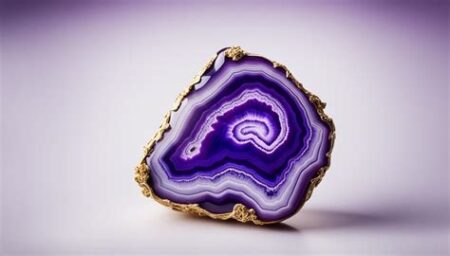Introduction

Crystallized fossils, also known as petrified fossils, are fascinating remnants of ancient life that have undergone a remarkable transformation over millions of years. Minerals seep into the porous remains of organisms, replacing their organic matter molecule by molecule. This intricate process preserves the delicate structures of these once-living beings, providing invaluable insights into the history of life on Earth.
The Formation of Crystallized Fossils
The formation of crystallized fossils is a complex and time-consuming process that occurs under specific geological conditions. Here’s how it typically happens:
- Organism Death: An organism dies and its remains become buried in sediment.
- Mineral-Rich Water: Groundwater carrying dissolved minerals flows through the sediment and comes into contact with the buried remains.
- Mineral Deposition: Minerals from the water begin to deposit onto the surface of the remains, forming a thin layer.
- Replacement: Over time, the mineral layer gradually replaces the organic matter, molecule by molecule.
- Crystallization: As the mineral layer thickens, mineral crystals form and interlock, creating a solid, crystallized structure that preserves the original shape of the organism.
Types of Crystallized Fossils
Crystallized fossils can be found in a variety of forms, including:
- Petrified Wood: Formed when minerals replace the organic tissues of trees, creating sturdy replicas that resemble wood.
- Ammonite Fossils: Preserved remains of ancient marine creatures that resemble coiled shells, often filled with minerals.
- Dinosaur Fossils: Skeletal remains of dinosaurs that have been mineralized, providing valuable information about their anatomy and behavior.
- Insect Fossils: Well-preserved remains of insects, including their intricate wings and delicate body parts.
- Plant Fossils: Mineralized remnants of leaves, flowers, and other plant structures, offering glimpses into ancient vegetation.
Significance of Crystallized Fossils
Crystallized fossils hold immense scientific and cultural significance:
- Paleontological Study: They provide invaluable data for paleontologists studying the evolution, behavior, and diversity of life throughout Earth’s history.
- Geological Understanding: They help geologists determine the geological age and environmental conditions of ancient ecosystems.
- Educational Value: They serve as tangible examples of the incredible processes that have shaped our planet, making them valuable educational tools.
- Cultural Heritage: Crystallized fossils are often treasured as cultural artifacts, showcasing the artistic and aesthetic beauty of ancient life.
Applications of Crystallized Fossils
Beyond their scientific and cultural value, crystallized fossils have also found practical applications:
- Jewelry and Decorative Art: The vibrant colors and intricate patterns of crystallized fossils make them sought-after materials for jewelry, sculptures, and other decorative objects.
- Fossil Fuels: Petrified wood, a type of crystallized fossil, was once a major source of fuel, particularly during the Industrial Revolution.
- Biomimicry: The unique structures and properties of crystallized fossils inspire engineers and designers to create innovative materials and technologies, known as “fossilmimicry.”
- Paleopathology: By studying the diseases and injuries preserved in crystallized fossils, scientists gain insights into the health and well-being of ancient organisms.
The Future of Crystallized Fossils
The study and appreciation of crystallized fossils continue to grow as new discoveries are made and technologies advance. With the aid of advanced microscopy and imaging techniques, scientists can delve deeper into the intricate details of these ancient wonders.
- Non-Destructive Analysis: X-ray microtomography and other non-destructive methods allow researchers to examine the internal structures of crystallized fossils without damaging them.
- Fossil Data Sharing: Online databases and digital repositories make it easier for scientists worldwide to access and share crystallized fossil data for collaborative research.
- Fossil Conservation: Recognizing the importance of crystallized fossils, efforts are underway to protect and preserve these貴重な remains for future generations.
Conclusion
Crystallized fossils are remarkable time capsules that capture the beauty and diversity of life from eons past. Their formation, significance, and applications highlight the enduring power of nature and the intricate connections between the past, present, and future. As we continue to explore and study these ancient treasures, we deepen our understanding of Earth’s rich history and inspire countless innovations.
Tables
Table 1: Types of Crystallized Fossils
| Type | Description | Example |
|---|---|---|
| Petrified Wood | Mineralized remains of trees | Sequoia stumps |
| Ammonite Fossils | Coiled shell-like remains of marine creatures | Baculites |
| Dinosaur Fossils | Mineralized skeletal remains of dinosaurs | Tyrannosaurus rex |
| Insect Fossils | Preserved remains of insects | Archaeoraptor |
| Plant Fossils | Mineralized remnants of plant structures | Ferns, leaves |
Table 2: Applications of Crystallized Fossils
| Application | Example |
|---|---|
| Jewelry and Decorative Art | Necklaces, sculptures, vases |
| Fossil Fuels | Petrified wood |
| Biomimicry | Fossil-inspired materials for construction, medicine |
| Paleopathology | Studying diseases and injuries in ancient organisms |
Table 3: The Importance of Crystallized Fossils
| Value | Significance |
|---|---|
| Paleontological Study | Insights into evolution and biodiversity |
| Geological Understanding | Determining age and environmental conditions |
| Educational Value | Tangible examples of geological and biological processes |
| Cultural Heritage | Appreciated as artistic and historical artifacts |
Table 4: Future Trends in Crystallized Fossil Research
| Trend | Description |
|---|---|
| Non-Destructive Analysis | Advanced microscopy and imaging techniques for detailed examination |
| Fossil Data Sharing | Online databases and repositories for collaborative research |
| Fossil Conservation | Efforts to protect and preserve crystallized fossils |
| Fossilmimicry | Inspiration for innovative materials and designs |




























